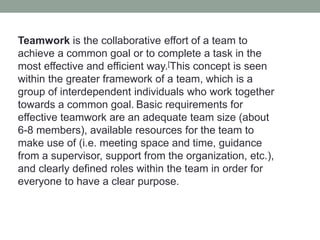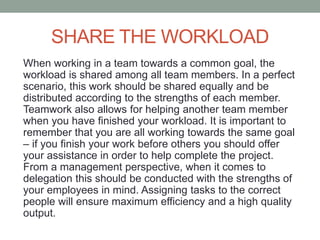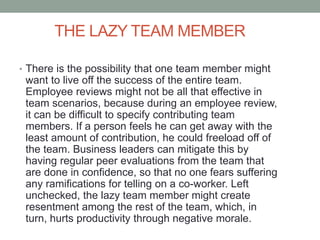Teamwork involves collaborative efforts of a team to achieve common goals efficiently. It is present in workplaces, sports, schools, and healthcare. Effective teamwork requires an adequate team size of 6-8 members, resources, and clearly defined roles. The importance of teamwork increased after World War II when organizations recognized its benefits from the Hawthorne studies. Teamwork improves efficiency, generates ideas, provides learning experiences, enhances communication, shares workloads, and creates support networks. Team dynamics describe how individual roles and behaviors impact the group. Leaders should understand team development phases, roles, define responsibilities, break down barriers, and focus on open communication to improve team dynamics.
















































